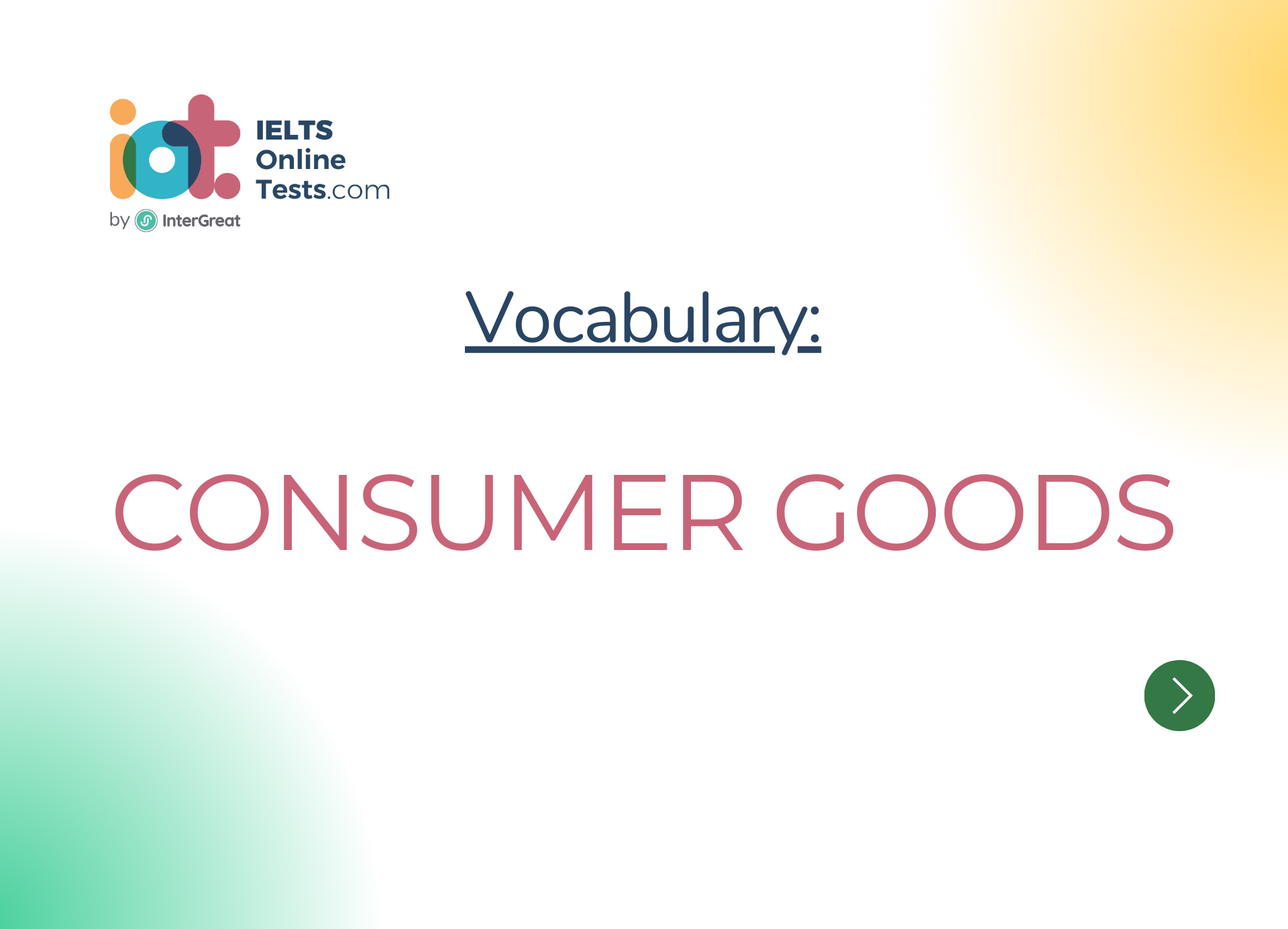
Consumer goods
Here's a lesson on vocabulary related to "Consumer Goods" for the IELTS band score 3.0-4.5:
I. General Consumer Goods Terms:
Consumer goods: Products purchased by individuals for personal use.
Brand: A name, logo, or symbol representing a specific company or product.
Quality: The standard or level of excellence of a product.
Warranty: A guarantee or promise from the manufacturer regarding the quality or performance of a product.
Price: The amount of money required to purchase a product.
II. Types of Consumer Goods:
Electronics: Devices and appliances that operate using electrical currents, such as smartphones, TVs, and refrigerators.
Clothing: Items worn to cover or protect the body, including shirts, pants, dresses, and shoes.
Personal care products: Items used for personal hygiene and grooming, such as toothpaste, shampoo, and cosmetics.
Household appliances: Electrical or mechanical devices used for routine household tasks, like washing machines, ovens, and vacuum cleaners.
Furniture: Items used for seating, sleeping, or storing belongings, such as chairs, tables, beds, and cabinets.
III. Shopping for Consumer Goods:
Shopper: A person who purchases or looks for consumer goods.
Comparison shopping: The act of comparing prices, features, and quality of similar products before making a purchase.
Salesperson: An employee who assists customers in a store and provides information about products.
Discount: A reduction in price from the original retail price.
Clearance sale: A sale to get rid of excess stock or discontinued items at reduced prices.
IV. Product Characteristics:
Durability: The ability of a product to withstand use or wear over time.
Functionality: The intended purpose or practicality of a product.
Design: The aesthetic or visual aspects of a product.
Features: Specific characteristics or attributes that distinguish a product from others.
Size: The dimensions or physical measurements of a product.
V. Consumer Rights and Protection:
Consumer rights: The entitlements and protections afforded to consumers, such as the right to safety, information, and fair treatment.
Product recall: The removal of a product from the market due to safety concerns or defects.
Consumer advocacy: Efforts to protect and promote the interests of consumers.
Consumer complaint: A formal expression of dissatisfaction with a product or service.
Consumer protection agency: An organization or government body that ensures consumer rights are upheld.
VI. Product Packaging:
Packaging: The materials used to contain, protect, and present a product.
Label: A piece of paper or material attached to a product that provides information about its contents, usage, and warnings.
Eco-friendly packaging: Packaging that is designed to have minimal impact on the environment.
Shelf life: The period during which a product can be stored or used before it deteriorates or expires.
Expiry date: The date after which a product is no longer recommended for use or consumption.
VII. Shopping Preferences:
Brand loyalty: A customer's tendency to consistently choose products from a specific brand.
Value for money: The perception that a product provides good quality and benefits relative to its price.
Trendy: Fashionable or in line with current popular styles or preferences.
Convenience: The ease or practicality of using or obtaining a product.
Online reviews: Feedback and opinions posted by consumers about their experiences with a product.
Remember to practice using these vocabulary words in sentences and conversations to improve your understanding and fluency in English




